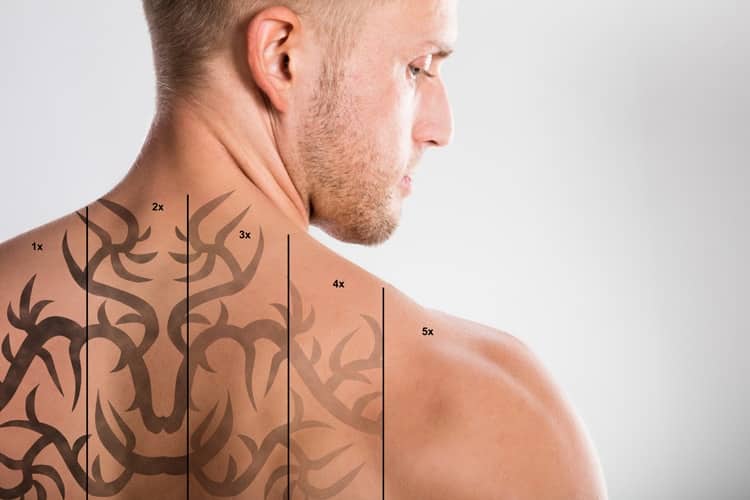Laser treatments to remove tattoos.
Men seeking tattoo removal do so for a range of reasons including a change of circumstances or regret and in some cases, skin reaction to tattoo ink. Some simply want to fade a tattoo rather than entirely remove it so they can replace it with a different design. This is called remodelling and is becoming an increasingly common request.

We know when men want to have a tattoo removed their 2 main questions are how many treatments will it take and what is the cost. We have been performing laser tattoo removal for over 20 years and experience has taught us results are unpredictable, as we are dealing with a lot of unknowns with the tattoo ink and with an individual’s metabolism, and this needs to be honestly explained. What we do know is the best result, with the lowest risk of scarring, is achieved with experienced University qualified practitioners using a range of high quality lasers in a clean and professional medical clinic environment.
Laser Tattoo removal is the process of removing tattoo ink with laser technology, and it generally requires multiple treatments over months. Different types of lasers target different colours and types of tattoo ink, so for the best results in removing tattoos a number of different lasers are usually needed. The most recent advance in laser tattoo removal technology is the use of picosecond lasers and the most established of these is the PICOSURE. It’s designed to pulse for fractions of a second (in the picosecond range) causing a sound wave effect that shatters the tattoo pigments.
In addition to the introduction of picosecond lasers, there have also been advances in treatment protocols that combine the use of fractional lasers with picosecond lasers and the use of multiple pass techniques rather than older single pass protocols.
Laser tattoo removal has evolved over the years with recent advances significantly improving the results in terms of faster clearance and a reduced risk of scarring.
It is best not to be tanned in the area of the tattoo, so if necessary avoid sun exposure for at least 2 weeks before having laser treatment. Topical anaesthetic (EMLA) that is available from pharmacies can be used to reduce discomfort and should be applied 60 minutes before treatment with glad wrap over the top.
A dressing is applied after treatment with an anti-inflammatory cream and should remain in place for 48 hours if possible. A cold pack after treatment can help reduce discomfort. Wound care is very important especially in the first week.
Infection is rare after laser tattoo removal but if redness develops use BEPANTHEN cream and if area becomes painful or pus develops this indicates infection and you need to be reviewed for possible antibiotics.
Before and after images are presented purely as a reference point of the results that can be achieved. Everyone is unique and outcomes will vary and realistic expectations need to be discussed on a case by case basis.
Got questions? Or ready to book in? Contact our experienced and friendly team to start your journey to healthy skin with us.